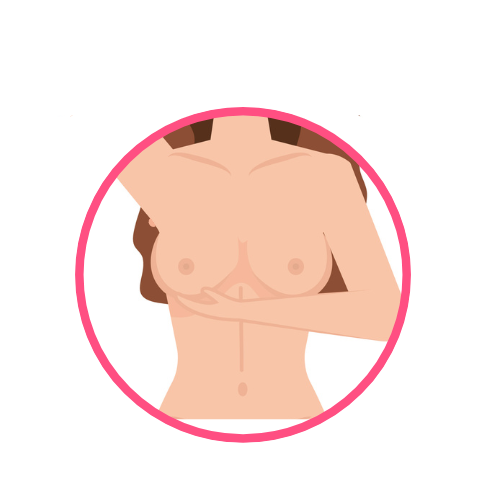Let’s understand what is a ‘symptom’ and its relation with breast cancer.

Any unusual change in the appearance or in the condition of an individuals breast or in the nearby parts of the breast can act as a sign of breast cancer. This sign of change is termed as a ‘symptom of breast cancer’.
An example of symptom in breast cancer is a solid mass called tumor or a lump. Lump is a type of symptom which forms when the cells in our body become cancerous and multiply in vast numbers. However a lump is not the only symptom of breast cancer. Because breast cancer can also arise in different parts of the breast such as the skin or nipple and changes in these parts are not always related to a lump.
To check whether you have any of the below listed symptom a technique called breast examination is used. Breast examination can be done by a doctor as well as by an individual himself too.
However to do this getting knowledge of symptoms of breast cancer is important. So that it will help to take timely actions such as visiting doctor early before the cancer gets severe.
“It is important to understand that not every symptom or every lump can be because of cancer but it can also be due to other breast conditions.”
Let’s explore the different types of symptoms.
New lump in the breast or underarm (armpit).
Noticing your breast getting bigger or smaller, or changing shape, can be a sign of breast cancer. It could mean one breast is different from the other or that the shape looks odd. These changes happen because of cancer cells growing in the breast tissue.


A lump is not the only symptom of breast cancer; there are many more. These different types of symptoms can be visible to the human eye or might not be visible. Below are the common symptoms of breast cancer

Any change in the size or the shape of the breast
Noticing your breast getting bigger or smaller, or changing shape, can be a sign of breast cancer. It could mean one breast is different from the other or that the shape looks odd. These changes happen because of cancer cells growing in the breast tissue.

Blood stained/ watery/greenish discharge from nipple
If you see blood, watery, or greenish fluid coming from your nipple, it could be a sign of breast cancer. This discharge may not be normal and could be caused by cancer cells in the breast.

Physical changes, such as a nipple turned inward (nipple retraction)
When a nipple turns inward, it’s called nipple retraction. This means the nipple, which usually points outward, starts to point inward instead. It can happen gradually or suddenly. Nipple retraction can sometimes be a sign of breast cancer.
Also, skin rashes or irritation, and ongoing pain that is not related to your menstrual cycle but persists after your period, occurring in only one breast, are also included in the list of symptoms for breast cancer. Therefore, if you notice any symptoms, it is important to consult a medical professional.
Understanding the symptoms of breast cancer and taking precautionary action can help detect breast cancer early, preventing delays in treatment and potentially improving outcomes.
After becoming aware of the symptoms, one can pursue self-examination, which can be done at home in a step-by-step manner. During this process, you check your breasts for any changes in size, shape, or texture, as well as any lumps or areas of tenderness. If you notice any unusual symptoms, it’s crucial to see a doctor for a thorough evaluation.
Therefore Regular self-examinations, combined with clinical breast exams performed by a healthcare professional, form a vital part of detecting breast cancer early
